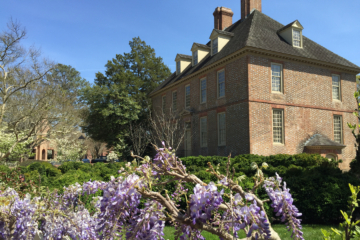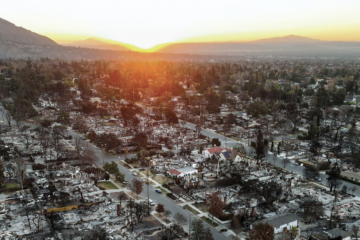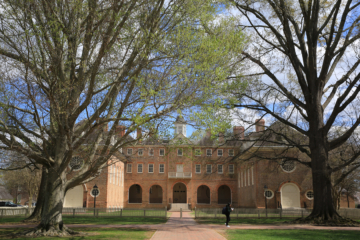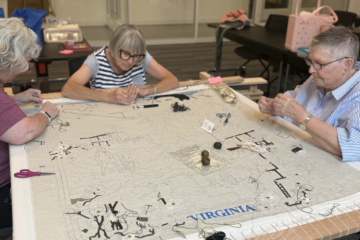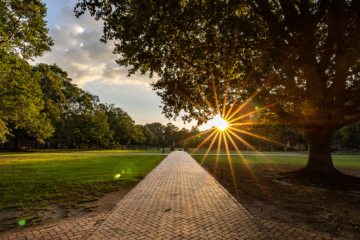W&M to preserve President’s House for future generations
William & Mary’s Board of Visitors unanimously approved a resolution this month to preserve the university’s historic President’s House for future generations.
According to the resolution, the board will explore possibilities of transforming the university’s historic President’s House into a space that remains central to the life of the university.
The decision follows years of extensive research, at the board’s direction, on how best to preserve the historic structure for future generations. The most recent review came from the nationally known architectural and preservation firm Glavé & Holmes. The report outlined the work necessary to restore and preserve the 293-year-old house, depending on future use. It determined such work would be much more extensive — and costly — if the space were to continue being used as a residence including changing the current footprint of the building with a new wing.
In 2023, Rector Charles E. Poston J.D. ’74, P ’02, P ’06 charged a committee to review the preservation, security and sustainability of the Historic Campus — specifically the Wren Building and President’s House. Experts from the university and Colonial Williamsburg found significant work would be required to continue its use and prevent further degradation. In addition, the use of the building as a primary residence presented security concerns given the location so close to the edge of campus boundaries.
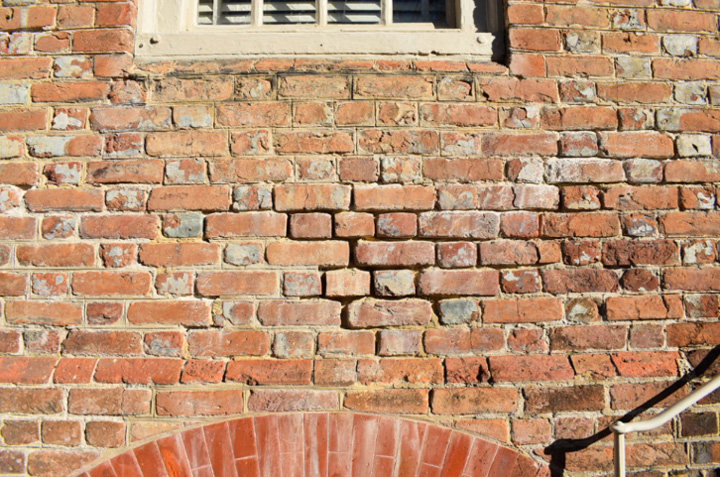
Later that year, the board asked President Katherine A. Rowe to relocate so that a more thorough evaluation of the house’s preservation needs could be conducted.
In the resolution, the board directs William & Mary staff to initiate a preservation effort. The resolution states that the building shall continue to be known as the historic President’s House, and it directs the university to identify alternative locations on campus for a presidential residence. The board requested staff to provide an initial report of findings and recommendations by the end of this year. The report should ensure a strong connection between the president and the historic structure. Possible options include a space to host community, celebration and ceremony as the “living room” of the university, as well as a meeting space for university leaders and guests.
“We have a responsibility to preserve William & Mary’s historic buildings for future generations,” said Poston. “The President’s House is a national treasure that should be restored and maintained for all times coming. It will remain a beloved campus centerpiece for centuries to come.”
The decision was made during the board’s summer retreat July 24, following a review of the Glavé & Holmes report by the Committee on Administration, Buildings & Grounds, chaired by Vice Rector Ardine Williams. The decision amends a prior board decision that the current President’s House should always be the residence for the university president. While a new on-campus residence is identified, the president will continue living in a university-owned residence just off campus.
“The preservation of a national treasure like the historic President’s House is of utmost importance to the board,” said Williams. “We also believe that presidents and their families should live on campus in a residence that is secure, accommodating and sufficient for the obligations that the position demands.”
A national treasure
The historic President’s House was built in 1732. Throughout its long history, the structure has been used for various purposes, including a military headquarters during the Revolutionary War and Civil War, a hospital for troops, a guest house and student and faculty housing.
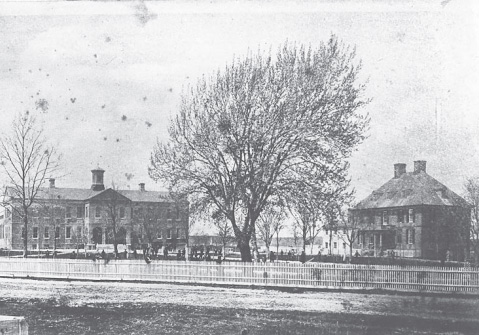
In addition, it has served as a venue for special gatherings with members of the community, world leaders and other guests. Many dignitaries have visited the President’s House through the centuries, including every 20th century president from Woodrow Wilson to Dwight D. Eisenhower. Foreign visitors have included Queen Elizabeth II, Winston Churchill and King Charles, when he was the Prince of Wales.
Throughout its nearly three centuries of existence, it has endured multiple fires and undergone several alterations and restorations. A few years ago, an effort began to preserve William & Mary’s Historic Campus, including the Wren Building and historic President’s House. The Brafferton was renovated in 2013.
In 2022, the Colonial Williamsburg Foundation completed an initial assessment, identifying issues affecting the structural integrity of both buildings and suggesting that long-term residential use could significantly damage the historic property. To dig deeper, the university retained Glavé & Holmes, which has studied and renovated numerous historic properties at Virginia universities.
In 2024, following a $13,951,000 appropriation from the Commonwealth of Virginia, planning began to restore the Wren Building. Renovations have continued this year and will be completed in early 2026.
A way forward
In its report, Glavé & Holmes outlines comprehensive findings on the building’s exterior and interior, covering issues ranging from water infiltration to climate control problems.
Some of the most significant recommendations include a new roof, a new HVAC system and updates to make the building accessible in compliance with the Americans with Disabilities Act.
The report outlines several options for future use and identifies the necessary work required to make each one possible. Much of the work must be done regardless of use, but the scope and extent of work will be significantly different depending on that usage. For instance, many more accessibility updates would be necessary if the house were to be used for residential purposes. Similarly, HVAC needs will depend on whether people are in residence full-time or using the building on occasion. Experts recommend that the temperature inside the historic building should be changed seasonally, not daily. To preserve the 18th-century materials and features of the structure, best preservation practice is for interior temperatures to be set at 75 degrees or higher in the summer or 68 degrees or lower in the winter.
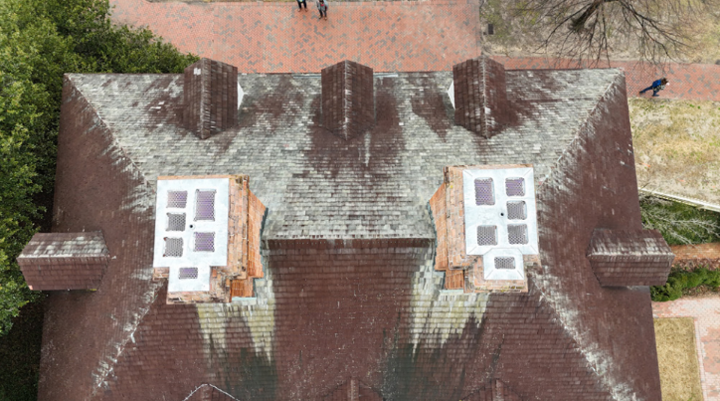
“In its current state, day-to-day living is difficult for the house’s modern-day residents,” said Williams. The presidents of tomorrow may have varying family structures or require special accommodations for mobility differences. In order for the building to continue being used as a residence, the report also recommends an addition be constructed on the first floor.
As a result, the preliminary cost estimates of restoring and preserving the house as a residence are significantly higher than the projected cost of restoring it as a place for special events. Because the historic President’s House is an auxiliary structure not primarily devoted to academic use, the university is fully responsible for the cost of its care and upkeep, without support from the state.
Those costs and the needs of the university’s presidents were top of mind for the board in its decision process. Now that the resolution has passed, work will begin on scoping and pricing the project.
“While it will take time, it is vital we do all we can to ensure this national treasure is restored and preserved,” said Williams. “It is more than just a part of William & Mary’s history — it is a part of our nation’s history.
“We must make certain it is an essential part of our future, too.”
Latest W&M News
- Rising from the ashesThe W&M community is living with, learning from and preventing devastating wildfires.
- An extraordinary year for William & MaryRecord-breaking philanthropy positions William & Mary to lead.
- America’s Tapestry project underway at the Muscarelle Museum of ArtThe project marks the 250th anniversary of the nation’s founding through the creation of 13 original tapestries designed to tell a unified story of the nation.
- College of Arts & Sciences launches new name, celebrates the people of the CollegeNew name reflects a bold vision, deep roots and the people shaping the future.
- Another bumper crop of Fulbright Scholars from W&M prepares to head abroadWilliam & Mary's global reach has been confirmed once again as nine recent graduates and alumni received highly selective Fulbright Scholarships.
- Can a parasitic worm help rebuild blue crab populations in the Chesapeake Bay?A new study published in the journal PLOS One by researchers at William & Mary’s Batten School & VIMS suggests parasitic worms could serve as a valuable biomarker for managing the fishery.



